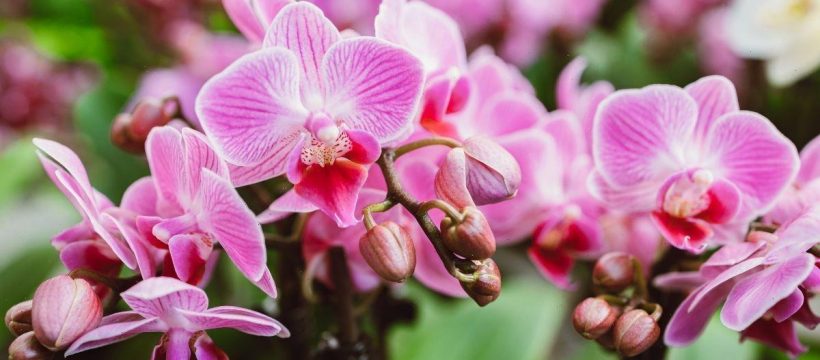Gardeners' World: Orchid expert talks caring for Phalaenopsis
We use your sign-up to provide content in ways you’ve consented to and to improve our understanding of you. This may include adverts from us and 3rd parties based on our understanding. You can unsubscribe at any time. More info
For plants, dormancy occurs when the weather is colder, and is often triggered by shorter days and less daylight. While this means houseplant owners can relax and not worry about watering their plants as often, according to experts, orchids continue to need feeding when they are resting. This is crucial is you want your plant to re-bloom.
Plant experts at Baby Bio® explained: “Orchids are wonderfully delicate houseplants that have been firm favourites in households for years thanks to their beautiful blooms which can last for months.
“Yet, it’s no secret that they have specific requirements and therefore must be treated carefully, a reputation which has caused many plant enthusiasts to be wary of owning an orchid.
“The key to orchid care is all in the environment. In their natural habitat, orchids are mainly either epiphytic, meaning they grow on trees, or lithophytic, meaning they grow on rocks.”
Most orchids naturally grow high up in the rainforest treetops on rough bark rather than on the ground in soil, which can be hard to mimic at home.

However, it is not impossible to create this environment for this houseplant. The experts added: “Always pot these plants in specific bark-based orchid compost which promotes aeration to the roots and drainage to prevent the plant becoming waterlogged.”
Aeration is extremely important for an orchid because they are prone to root rot, which occurs when they are left in wet compost.
This means it is vital owners wait until the compost is dry before watering it again to allow it time to dry out.
Baby Bio® experts continued: “While they are susceptible to overwatering, orchids get most of their moisture from the air and therefore prefer high humidity, so mist the foliage and aerial roots daily or place the plant next to a tray of wet pebbles to increase air humidity.
DON’T MISS:
Avoid using tap water with peace lily houseplant – what to use instead [EXPERT]
Mary Berry’s quiet life in gorgeous riverside town [INSIGHT]
‘Effective’ method to ‘banish’ window condensation as winter looms [EXPLAINER]
“Consider planting them in rooms that are naturally more humid.” Rooms to consider placing them include the bathroom or kitchen, but it is important they are not placed in direct sunlight.
The ideal spot for growing orchids is either south or east-facing windows where they can receive indirect light. During the colder months of the year, place it away from heat sources and draughts.
In the winter, mimicking a humid environment can be even more tricky, especially when the heating is on.
In most homes during the winter, the air is extremely dry, so orchids will definitely benefit from a regular misting with tepid water. This should be done every two to three days, making sure to avoid the flowers in the process.

Once the flowers have faded and dropped, it can be tempting to discard the plant, thinking it won’t flower again.
However, it is possible to get an orchid to bloom again, as long as they are pruned as soon as the flowers drop.
The plant experts added: “Most orchid owners will admit that getting their plants to repeat bloom can be extremely difficult.
“Their nutritional needs are unique and need fertilising when in bloom and dormant. Once your plant’s flowers have fallen, you can encourage it to re-bloom the following season by pruning the whole flower stem and continuing to care for it as usual while it lies dormant.”

It is important to trim away any dead leaves, tissue or roots, being sure to cut diagonally.
For unhealthy brown spikes, cut all the way back to the base of the plant, otherwise trim one inch above the node.
The experts added: “Remember, there are many species of orchid, so each should be treated according to its requirements. We recommend the phalaenopsis moth orchid variety for beginners.”
Moth orchids, just one of the 57 native species in the UK, usually flower for six to 10 weeks.
Source: Read Full Article
